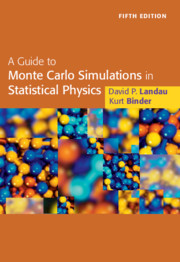117 results
Anxiety in late-life depression: Associations with brain volume, amyloid beta, white matter lesions, cognition, and functional ability
-
- Journal:
- International Psychogeriatrics , First View
- Published online by Cambridge University Press:
- 25 January 2024, pp. 1-12
-
- Article
- Export citation
Investigating the association between characteristics of local crisis care systems and service use in an English national survey – CORRIGENDUM
-
- Journal:
- BJPsych Open / Volume 10 / Issue 1 / January 2024
- Published online by Cambridge University Press:
- 06 December 2023, e6
-
- Article
-
- You have access
- Open access
- HTML
- Export citation
Investigating the association between characteristics of local crisis care systems and service use in an English national survey
-
- Journal:
- BJPsych Open / Volume 9 / Issue 6 / November 2023
- Published online by Cambridge University Press:
- 03 November 2023, e209
-
- Article
-
- You have access
- Open access
- HTML
- Export citation
Utopian constitutionalism in Chile
-
- Journal:
- Global Constitutionalism / Volume 13 / Issue 1 / March 2024
- Published online by Cambridge University Press:
- 27 October 2023, pp. 228-238
-
- Article
-
- You have access
- Open access
- HTML
- Export citation
Judicial Reform or Abusive Constitutionalism in Israel
-
- Journal:
- Israel Law Review / Volume 56 / Issue 3 / November 2023
- Published online by Cambridge University Press:
- 26 October 2023, pp. 292-304
- Print publication:
- November 2023
-
- Article
-
- You have access
- Open access
- HTML
- Export citation
Healing Liberal Democracies: The Role of Restorative Constitutionalism
-
- Journal:
- Ethics & International Affairs / Volume 36 / Issue 4 / Winter 2022
- Published online by Cambridge University Press:
- 22 December 2022, pp. 427-435
-
- Article
-
- You have access
- Open access
- HTML
- Export citation
17 - Can Constitutions Fix Party System Breakdowns?
- from Part VII - Politics, Sociology, Media, and Corruption as Contexts for Constitutionalism and Governance
-
-
- Book:
- Constitutionalism and a Right to Effective Government?
- Published online:
- 20 October 2022
- Print publication:
- 27 October 2022, pp 223-234
-
- Chapter
- Export citation
Abusive Internationalism? On Democracies and International Law. By Tom Ginsburg. Cambridge, UK: Cambridge University Press, 2021. Pp. xvii, 329. Index.
-
- Journal:
- American Journal of International Law / Volume 116 / Issue 4 / October 2022
- Published online by Cambridge University Press:
- 27 October 2022, pp. 889-895
- Print publication:
- October 2022
-
- Article
- Export citation
The Veil of Participation: Citizens and Political Parties in Constitution-Making Processes. By Alexander Hudson. Cambridge: Cambridge University Press, 2021. 224p. $110.00 cloth.
-
- Journal:
- Perspectives on Politics / Volume 20 / Issue 1 / March 2022
- Published online by Cambridge University Press:
- 09 March 2022, pp. 346-348
- Print publication:
- March 2022
-
- Article
- Export citation
22 - Constitutional Backsliding: Colombia
- from VII - Challenges to Liberal Democratic Constitutionalism
-
-
- Book:
- Constitutionalism in Context
- Published online:
- 17 February 2022
- Print publication:
- 17 February 2022, pp 497-516
-
- Chapter
- Export citation
Index
-
- Book:
- A Guide to Monte Carlo Simulations in Statistical Physics
- Published online:
- 24 November 2021
- Print publication:
- 29 July 2021, pp 556-564
-
- Chapter
- Export citation
10 - Non-equilibrium and irreversible processes
-
- Book:
- A Guide to Monte Carlo Simulations in Statistical Physics
- Published online:
- 24 November 2021
- Print publication:
- 29 July 2021, pp 430-464
-
- Chapter
- Export citation
4 - Importance sampling Monte Carlo methods
-
- Book:
- A Guide to Monte Carlo Simulations in Statistical Physics
- Published online:
- 24 November 2021
- Print publication:
- 29 July 2021, pp 80-160
-
- Chapter
- Export citation
11 - Lattice gauge models: a brief introduction
-
- Book:
- A Guide to Monte Carlo Simulations in Statistical Physics
- Published online:
- 24 November 2021
- Print publication:
- 29 July 2021, pp 465-483
-
- Chapter
- Export citation
1 - Introduction
-
- Book:
- A Guide to Monte Carlo Simulations in Statistical Physics
- Published online:
- 24 November 2021
- Print publication:
- 29 July 2021, pp 1-8
-
- Chapter
-
- You have access
- HTML
- Export citation
13 - Monte Carlo simulations at the periphery of physics and beyond
-
- Book:
- A Guide to Monte Carlo Simulations in Statistical Physics
- Published online:
- 24 November 2021
- Print publication:
- 29 July 2021, pp 519-539
-
- Chapter
- Export citation
Preface
-
- Book:
- A Guide to Monte Carlo Simulations in Statistical Physics
- Published online:
- 24 November 2021
- Print publication:
- 29 July 2021, pp xv-xviii
-
- Chapter
- Export citation
9 - Monte Carlo renormalization group methods
-
- Book:
- A Guide to Monte Carlo Simulations in Statistical Physics
- Published online:
- 24 November 2021
- Print publication:
- 29 July 2021, pp 416-429
-
- Chapter
- Export citation
15 - Emerging trends
-
- Book:
- A Guide to Monte Carlo Simulations in Statistical Physics
- Published online:
- 24 November 2021
- Print publication:
- 29 July 2021, pp 554-555
-
- Chapter
- Export citation

A Guide to Monte Carlo Simulations in Statistical Physics
-
- Published online:
- 24 November 2021
- Print publication:
- 29 July 2021



